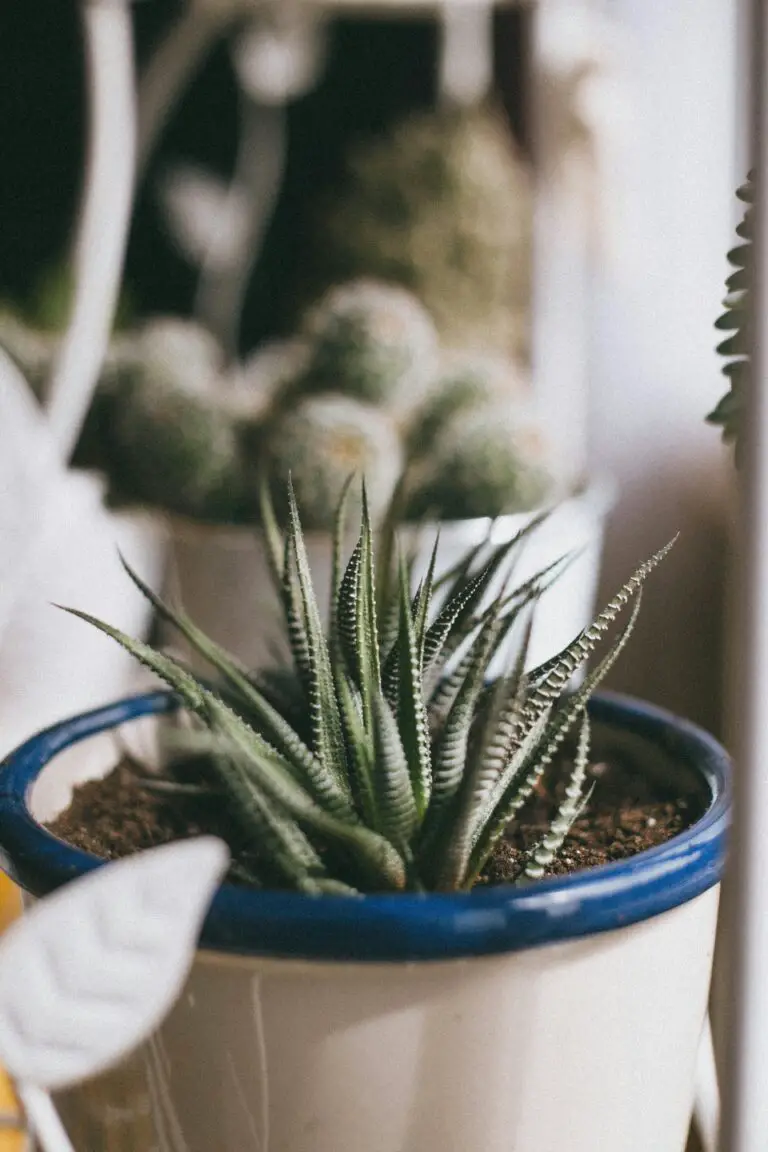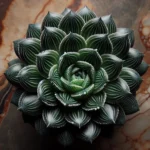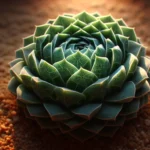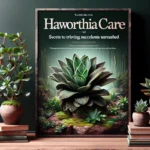Introduction to Haworthia Pygmaea
Welcome to the diminutive yet delightful world of Haworthia pygmaea, a real gem among succulents hailing from the sun-drenched nooks of South Africa’s Western Cape. Imagine a miniature wonderland, a patchwork quilt of fleshy green textures dotted with crystalline touches, sitting quietly in a terracotta pot.
With its subtle charm, Haworthia pygmaea is not just a plant; it’s a statement of sophistication. This petite succulent boasts rosettes that capture the imagination with their intricate, almost geometric patterns. Each leaf, plump with moisture, stands as a testament to the plant’s resilience against the arid conditions of its homeland. The dalliance of light and shadow across its surface brings every little ridge and valley into sharp relief – a miniature landscape on your windowsill.
Why should this succulent make its way into your collection, you ask? Simply because it represents the unspoken allure of the succulent world; a treasure trove waiting to be explored. To peek into the life of Haworthia pygmaea is akin to uncovering a secret garden where each specimen narrates tales of survival, adaptation, and sheer beauty.
Perhaps you’re intrigued by the thought of cultivating a slice of Africa’s vibrant botany? Or maybe you’re seeking the next standout specimen for your growing succulent menagerie? Either way, delving into the ultimate guide to succulent care can elevate your green thumb game. There, you’ll unlock an alcove of knowledge, a how-to sanctuary for gardeners seeking to nurture their own miniature oases.
As we unfurl the layers of this understated succulent’s appeal, remember that the true joy of gardening lies within these small discoveries. The Haworthia pygmaea does not clamor for attention with flamboyant displays. Instead, it invites a closer look, a moment to pause and appreciate the subtler side of the natural world. And in that moment, you connect with something truly remarkable.
The Origins of Haworthia Pygmaea
Tucked away in the arid landscapes of South Africa lies the birthplace of a small yet captivating succulent known as Haworthia pygmaea. This exquisite plant, often mistaken for a miniature aloe, thrives in the cracks and crevices of rocky terrains, where it has adapted to flourish in the harsh climates of its homeland. The discovery of this diminutive gem is credited to botanists who, captivated by its charm, introduced it to the world of plants enthusiasts.
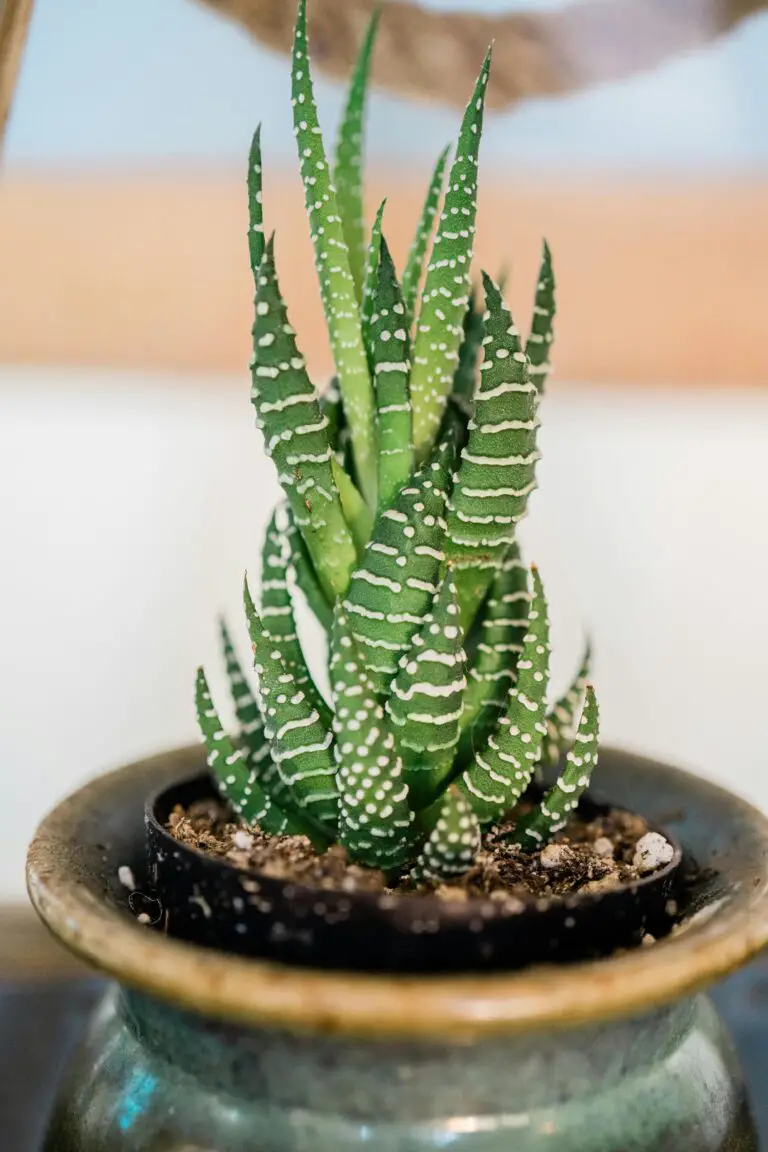
The Pygmaea is a proud member of the Haworthia genus—a tribute to Adrian Hardy Haworth, a notable British entomologist and botanist. Within its genus, Haworthia pygmaea stands out for its textured, glass-like leaves that form an intricate rosette, sparkling under the sun like a cluster of emeralds. It’s this distinctive appearance that’s not only garnered the attention of hobbyists but also serves as a critical factor when cultivating these succulents.
In its natural habitat, the plant gains protection from extreme temperatures by burrowing beneath the soil’s surface, leaving only its transparent tips exposed—nature’s own version of a solar panel. This clever adaptation, vital for its survival in the wild, informs plant aficionados of the best practices for its care in captivity. To thrive, haworthia pygmaea necessitates a mimicry of its environment, favoring well-drained soils and partial shade where its delicate beauty can truly shine.
For those eager to learn more about nurturing these succulents, exploring insights on succulent care can prove invaluable. Understanding these fundamentals not only enriches the growing experience but also ensures these delightful botanicals can enchant generations to come.
Whether you’re a veteran collector or a budding enthusiast, the story of Haworthia pygmaea‘s origins is not just an anecdote of discovery but a cornerstone of horticultural wisdom. Its lineage and the landscapes it evolved within serve to enlighten and inspire the care we provide, cultivating a deeper appreciation for these modest yet mesmerizing treasures.
Identifying Haworthia Pygmaea
Putting a spotlight on Haworthia pygmaea feels like unveiling a miniature treasure of the succulent world. Hailing from the rocky terrains of South Africa, this gem continues to captivate with its understated elegance and subtle allure. Imagine a plant so charismatic yet petite, it could easily be the centerpiece of a fairy garden or the silent star of a terrarium landscape.
Its signature look comes from its robust, tapering leaves, like rows of tiny green spires reaching upwards, each one embraced with delicate white variegations that seem to glow in contrast to the deep greens typically seen in Haworthias. Dive deeper into the hypnotizing beauty of Haworthia pygmaea with this captivating video. Each specimen may only stand a few inches tall, but its visual impact leaves a lasting impression.
Color variations in Haworthia pygmaea reflect the story of its growth, with its leaves blushing in shades of brown or deep red when gently stressed by sunlight or cool temperatures. For succulent enthusiasts, these color changes are thrilling visual cues and part of the joy of plant parenting. Such a dynamic display makes it undeniable why these plants deserve more than a passing glance.
As you embark on your succulent journey, understanding the care specifics is crucial for the well-being of these petite wonders. Taking a moment to explore the essentials of succulent care will equip you with the knowledge to nurture your own Haworthia garden, ensuring each tiny pygmaea thrives under your watch.
With Haworthia pygmaea, we’re reminded that the world of succulents is brimming with understated beauties waiting to be admired. Their unique textural presence brings a sense of serenity and groundedness to our homes. It might be small, but the Haworthia pygmaea confidently claims its space in the plant kingdom, proving that sometimes the most captivating charms are found in the smallest of packages.
Propagation and Growth Tips
Do you have a green thumb itching for a new challenge? Say hello to Haworthia Pygmaea, a succulent that’s as charming as it is manageable! Propagating this little wonder can be incredibly rewarding, so let’s dig into the dirt and get to the roots of starting your own Haworthia haven.
Propagating from offsets is straightforward. Picture this: Baby Haworthias cozied up to their parent, just waiting for you to give them their own space. Carefully separate these offsets, ensuring each has a portion of root, and plant them in a succulent-friendly mix—a dance of drainage and dryness.
If you’re feeling daring, why not sow some seeds? Unlike spring ‘flings,’ these slow-growers take their sweet time, so patience is key. Keep your seedlings moist—think of misting fairy kisses rather than a thunderstorm soak. And when they sprout, you’ll feel like a proud plant-parent witnessing their first steps!
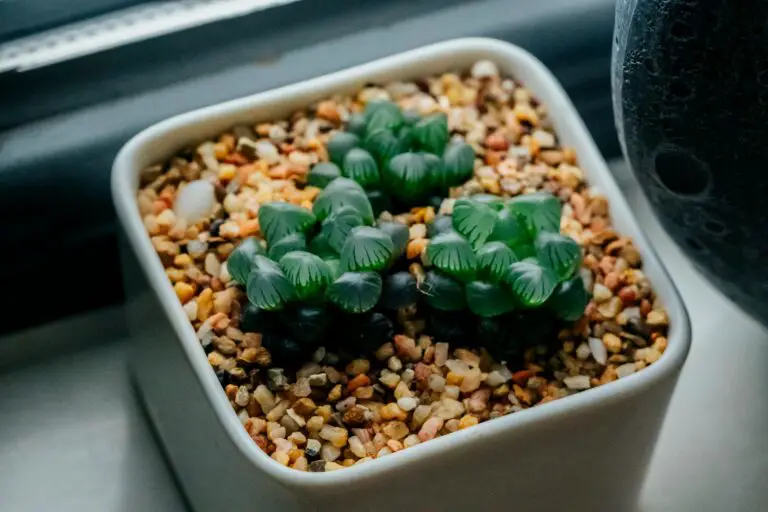
Achieving optimal growth for your Haworthia Pygmaea isn’t rocket science—it’s more like backyard astronomy, finding the sweet spot under the sun’s grand arch. These succulents crave bright but indirect light, like lounging in the daylight without the harsh glare. And soil? Give them something to sing about with a sandy serenade, blending in perlite or pumice for that airy texture they adore.
Watering is a bit of an art too. These succulents need a drink, but not a dip—water thoroughly when the soil feels desolate, waiting until it’s parched again before reaching for the watering can. It’s about feeling the rhythm, being in tune with your plant’s thirst.
Seeking more propagation pointers for different succulent species? You’re in luck because here’s a fantastic guide that’s brimming with insider tips and succulent secrets, ready to green-up your indoor oasis.
With these juicy tidbits, your Haworthia Pygmaea will be more than just a plant—it’ll be a living testament to your nurturing prowess. So let’s propagate, cultivate, and elevate these succulent spirits!
Haworthia Pygmaea Care Routine
When you first lay your eyes on the Haworthia Pygmaea, you’re not just looking at a plant; you’re adopting a new member that sparkles with secret charm. This dainty succulent is a true gem of arid landscapes, yet it craves the tender love and care only you can provide. Let’s delve into the essentials of nurturing this desert jewel right in your cozy home.
Temperature: Keeping Your Haworthia Happy
If you’ve ever felt the comfort of a mild spring breeze, that’s exactly the kind of climate your Haworthia Pygmaea yearns for. It thrives in a sweet spot of 18-22 degrees Celsius (65-72 degrees Fahrenheit). Imagine your little green friend soaking up the warmth on a sunny windowsill without succumbing to the scorching heat of midday. That’s its temperature nirvana!
Fertilization: A Delicate Dance
Think of fertilization as a refined dance, where less is more. Springtime is your cue to start, with a light feeding once a month. A balanced, water-soluble fertilizer is your best bet, diluted to half the strength to avoid overwhelming its tender roots. It’s like serving a gourmet, lite diet that ensures your succulent stays vibrant and robust.
Potting and Repotting: Choosing the Perfect Home
The ideal abode for your Haworthia Pygmaea is a terra cotta pot that whispers tales of breathability and excellent drainage. A yearly check-up to see if it’s time to size up its living quarters can turn into a delightful potting affair. When roots peek out like inquisitive hermits, it’s the perfect moment to provide a fresh haven that fosters growth and exploration.
Let’s not forget the bed it sleeps on—a well-draining soil mix resembles the sandy soils of its native land, allowing rainwater to sashay through without a lingering goodbye. The mix of feelings as you nestle your succulent into its new pot will remind you just why this care routine is as much a joy for it as it is for you.
Warding Off Unwanted Guests
Every so often, a resilient succulent like the Haworthia Pygmaea may attract tiny freeloaders seeking refuge. But not on our watch! Using a neem oil spray as a preventive measure can keep those pesky pests at bay. You’ll sleep soundly knowing your plump, textured leaves are unbothered by the likes of aphids and mealybugs.
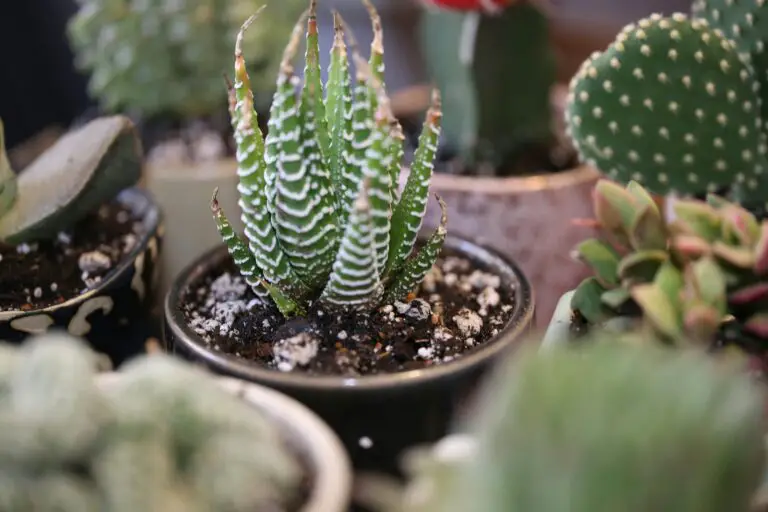
Think of this section as your go-to guide, a starting point on a journey of discovery with your Haworthia Pygmaea. With each green leaf and subtle hue, you’ll learn more about its likes, dislikes, and quirky behaviors. Don’t shy away from getting to know this charming succulent—that story is yours to write.
Common Challenges in Growing Haworthia Pygmaea
The delightful Haworthia Pygmaea, with its intricate and fleshy leaves, is a real treasure for succulent enthusiasts. Yet, even the most seasoned green thumbs can encounter stumbling blocks when cultivating this gem. Fear not — let’s shed light on some of the common hurdles gardeners face and germinate solutions together!
Root Rot: The Stealthy Succulent Saboteur
Adequate drainage is vital, for the terror of root rot looms where stagnant water resides. The telltale signs? Soggy, discolored roots whispering trouble below the soil’s surface. If dread grips your heart as you unearth these symptoms in your beloved Haworthia Pygmaea, swiftly remove the affected areas and let clean, dry air embrace the roots before replanting. Indeed, a critical rescue mission to save your petite plant pal from the clutches of decay.
Overwatering: Signs & Signals
Overwatering is akin to showing too much love, and your Haworthia Pygmaea might not appreciate it as much as you’d think. Be vigilant for leaves that grow hesitant and lack their usual vigor, turning soft and translucent as they bear the excess moisture burden. Here is an anecdote of caution: a friend once loved her succulent to the brink of oblivion, her eagerness expressed through the watering can. Learn from her tale — let the soil dry completely between waterings!
“H. Hakuteijo Zombie?! + Quick update on my Haworthia Collection” — Delve into this video to witness a riveting story of a Haworthia rebounding from the perils of improper care. It could be an eye-opener for fellow cultivators!
Troubleshooting Tips for Common Problems
You’ve spotted the early signs of distress; now it’s time for troubleshooting. A sagacious move would be to reassess your watering rhythms and ensure your Haworthia Pygmaea sits in a well-draining concoction, far away from poorly lit environments that speak of gloom rather than growth. Remember to approach its care with a detective’s eye — the subtlest clues can unveil a world of insight into your plant’s wellbeing.
May these snippets of wisdom empower you as you continue the delightful journey of growing Haworthia Pygmaea. It’s a path filled with learning curves, but with keen observation and a touch of plant empathy, success is but a few blossoms away.
Designing with Haworthia Pygmaea
Tiny but mighty, Haworthia pygmaea captures the hearts of plant enthusiasts not by towering size, but by the subtle charm and elegance it brings to any space. When integrated thoughtfully into interior and landscape designs, this delightful succulent becomes a cornerstone of botanical beauty. Let’s delve into the magic of Haworthia pygmaea and explore effective ways to showcase its splendor in your home or garden.
Creating Miniature Green Worlds: Terrarium Triumphs
Imagine a glass globe, perched on a shelf or hanging by your window, wherein a story unfolds through layers of sand, pebbles, and moss. Within this miniature ecosystem sits the crown jewel, Haworthia pygmaea, its rosette form and striped leaves drawing in the eye. Crafting a terrarium with this succulent at its core can be a meditative exercise, one that results in a living art piece that attracts attention and sparks conversation among admirers. To keep your terrarium thriving, ensure it gets plenty of bright, indirect light, and don’t forget, these drought-tolerant beauties need very little water—just enough to prevent their roots from longing for moisture.
Livening Up Your Personal Nooks: The Desktop Companion
For those harnessing the hustle and bustle of daily life, a touch of green can make all the difference in personal workspaces. A single Haworthia pygmaea plant, nestled in a quaint, hand-painted pot on your desk, serves as a refreshing visual reprieve from screens and paperwork. As resilient as it is attractive, this succulent requires minimal supervision, making it the ideal desk plant for professionals and students alike. Its mere presence can improve your day, making you feel more connected to nature even during those long hours indoors.
Rock Gardens Reinvented
The versatility of Haworthia pygmaea truly shines when utilized in outdoor rock gardens. Imagine a winding path of gravel, flanked by boulders and a variety of succulents, with intermittent patches of these starry plants playing peekaboo among the stones. The rugged texture of the rocks complements the smooth, fleshy leaves of Haworthia pygmaea, creating a sensory plethora. This setup not only epitomizes low-maintenance landscaping but also offers a modern twist to the classic garden design. Whether you’re planning a zen garden or seeking to accent your outdoor seating area, these succulents will persevere and prosper.
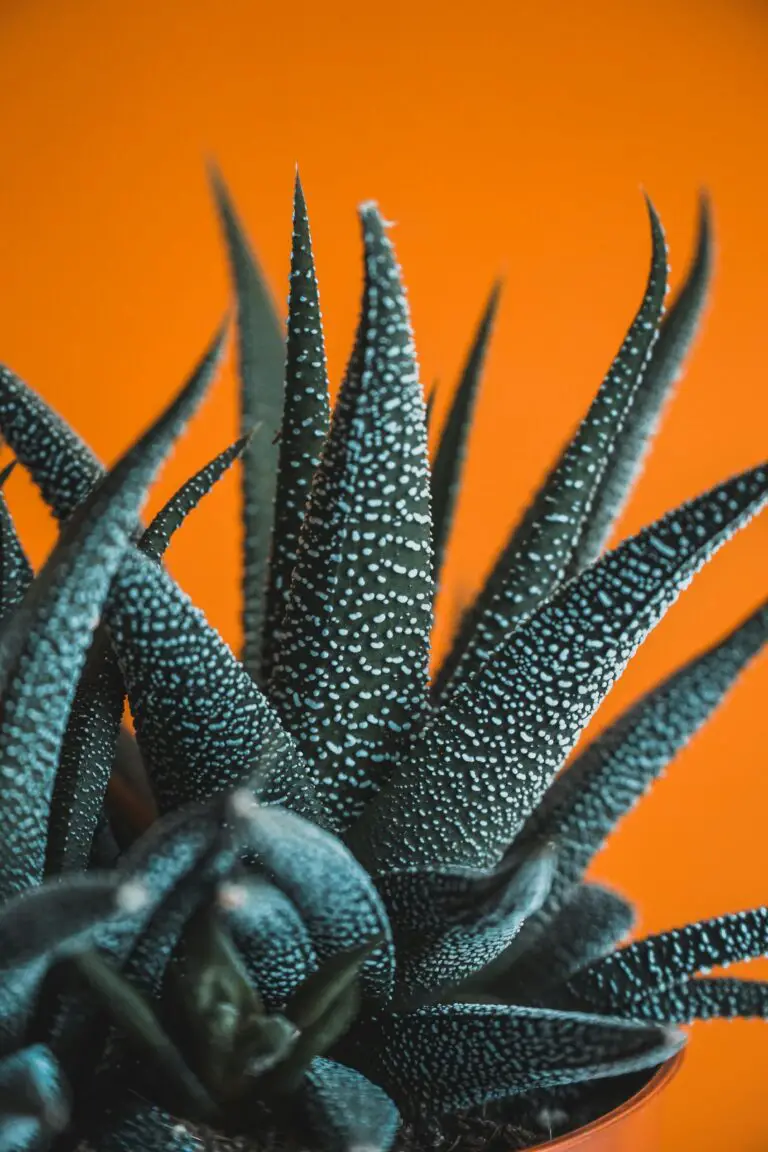
As you can see, the secret charm of Haworthia pygmaea lies in its subtle, yet sophisticated, contribution to design elements both indoors and out. From ornamental terrariums to serene rock gardens and even as a trusty colleague on your desk, this succulent adapts and thrives, asking for nothing but admiration in return. It’s the small details that often create the biggest impact, and Haworthia pygmaea is a testament to that sentiment.
Conservation and Ethical Sourcing
As aficionados of the diminutive yet dazzling Haworthia Pygmaea, it’s paramount that we direct our green thumbs towards the efforts of conservation and ethical sourcing. The lure of adding this charmer to our succulent collections is strong, but so should be our resolve to protect it. The survival of Haworthia Pygmaea isn’t just about maintaining a species; it’s about preserving the intricate tapestry of biodiversity that it’s woven into.
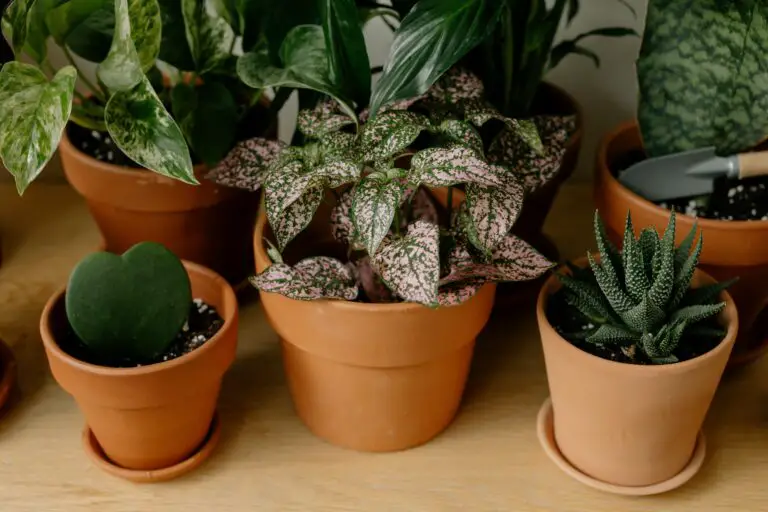
In the verdant nooks where Haworthia Pygmaea thrives, conscientious enthusiasts tread lightly, aware that each plant is a testament to nature’s meticulous artistry. Tales abound of overzealous collectors who, driven by desire, have pushed populations to the brink. Conversely, there are stories that fill the heart – like that of a local community that, recognizing the value these succulents hold, turned from harvesting to husbandry, shielding their natural heritage while nurturing an ethical trade.
Advocating for ethical sourcing isn’t just about feel-good purchases; it’s a real solution to a pressing issue. By supporting nurseries that prioritize seed-grown plants or those cultivated from tissue cultures, we not only get to enjoy our spiky friends but also ensure their continuity in the wild. Imagine the joy of witnessing the first sprouts of a seed you planted, knowing it’s part of a sustainable cycle that honours both the plant and the environment. It’s not just gardening; it’s a stewardship.
The Ripple Effect of Ethical Choices
Our choices as consumers extend far beyond our backyards. By choosing to support ethical sources, we send ripples through the market, affirming that the demand for sustainable practices is real and growing. Just think of the influence a community of enlightened plant lovers can exert, turning the tide against exploitation and towards respect for nature’s offerings.
As we marvel at the subtle beauty of Haworthia Pygmaea, let us also be mindful of the larger picture. This isn’t just horticultural hobbyism—it’s a campaign for conservation, ensuring that these succulents continue to enchant for generations to come. Our love for these plants can be the very thing that safeguards them, transforming admiration into action.
Frequently Asked Questions
Have you ever found yourself marveling at the compact beauty of Haworthia pygmaea, but felt a surge of questions bubble up in your mind? Worry not, fellow succulent enthusiast! Dive into this treasure trove of FAQs and uncover the secrets of this charming plant.
What Makes Haworthia Pygmaea Unique Among Succulents?
It’s no ordinary leafy resident in your plant collection! Haworthia pygmaea boasts a splendid array of intricate white patterns on its lush, translucent leaves, much like nature’s own artistry. Imagine peering into its leaves as if they were tiny stained glass windows, with sunlight playing hide and seek through the foliage.
How Often Should I Water My Haworthia Pygmaea?
Think of Haworthia pygmaea as the camel of the plant world—a hydration-smart powerhouse! With a drink of water every other week during the growing season, your green friend will be as content as a sunny day. Just let the soil dry out completely between waterings, mimic its natural arid homelands, and you’ll witness the plant thrive.
Does Haworthia Pygmaea Need Special Soil?
True to its hardy nature, Haworthia pygmaea isn’t fussy, but it loves to lounge in a well-draining mix. Imagine it kicking back in a sandy, gravely soil that ensures its roots are cozy, dry, and free from the dreaded root rot.
Is Haworthia Pygmaea Pet Friendly?
Yes! This little gem safeguards your furry friends. Unlike some green besties that pack a toxic punch to pets, Haworthia pygmaea holds the fort as a non-toxic ally. So, let your pets sniff around without a speck of worry!
Can Haworthia Pygmaea Live in Low Light?
It sure can! While Haworthia pygmaea relishes the morning sun’s gentle rays, it also thrives in the dappled shade, weaving its magic in less sunny nooks of your home. It’s the plant equivalent of a sun-lover who also enjoys a shady retreat on summer afternoons.
